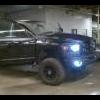-
Recently Browsing 0 members
No registered users viewing this page.
-
-
Recent Topics
-
- 1 comment
- 61 views
-
- 6 comments
- 1,739 views
-
- 20 comments
- 470 views
-
- 400 comments
- 34,690 views
-
- 3 comments
- 173 views
-
- 4 comments
- 329 views
-
-
-
Recent YouTube Posts



